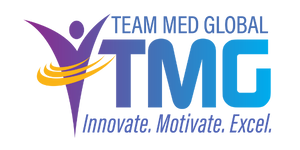 Credentialing is a critical function in any healthcare organization but, in multispecialty practices, it becomes significantly more complex. With a wide range of specialties under one roof, credentialing teams must navigate competing timelines, differing privileging requirements, and large volumes of provider data, all while ensuring compliance and consistency.
Credentialing is a critical function in any healthcare organization but, in multispecialty practices, it becomes significantly more complex. With a wide range of specialties under one roof, credentialing teams must navigate competing timelines, differing privileging requirements, and large volumes of provider data, all while ensuring compliance and consistency.
For credentialing professionals, success depends on process discipline, strong communication, and an ability to adapt to diverse clinical needs without losing operational focus.
More Specialties, More Privileging Nuances
One of the biggest challenges in multispecialty credentialing is the variability in privileging requirements. A general surgeon, an anesthesiologist, and a behavioral health provider may all require different documentation, competency verifications, and committee approvals.
This variability increases the risk of:
- Missing or incomplete privilege forms
- Delayed approval cycles due to inconsistent documentation
- Confusion over overlapping or non-standard privileges
Credentialing professionals must be well-versed in the nuances of each specialty’s clinical scope and collaborate closely with department chairs to ensure privileges align with both organizational policy and specialty-specific standards.
Volume Management and Parallel Timelines
Multispecialty practices tend to have higher provider counts, and often, staggered hiring or onboarding across departments. This creates a need for high-efficiency credentialing systems that can manage:
- Large volumes of applications and reappointments
- Providers working across multiple locations or service lines
- Simultaneous processing for different specialties with different review committees
Credentialing teams must build workflows that allow for parallel processing without sacrificing accuracy—especially when delays in one file can create a domino effect for onboarding, scheduling, or billing.
Coordinating Multiple Stakeholders
Multispecialty credentialing requires ongoing coordination with medical directors, department leaders, compliance officers, and medical executive committees—often simultaneously. Each stakeholder may have a different threshold for documentation, turnaround expectations, or comfort with digital workflows.
Credentialing professionals must serve as the communication hub, ensuring that:
- Reviewers receive timely and complete files
- Expectations for turnaround and documentation are clearly communicated
- Follow-up is persistent but respectful of clinical demands
Standardizing What You Can, Customizing What You Must
The key to managing volume and variability is knowing what can be standardized and what must be specialty-specific. Standardized checklists, templates, and verification protocols create baseline consistency, while customizable privileging forms and specialty guidance ensure accuracy.
Credentialing teams in multispecialty environments benefit from:
- A central database or software system that flags incomplete items and tracks progress
- Specialty-specific document templates that align with privileging requirements
- A master calendar of committee meetings and reappointment cycles, color-coded by specialty if needed
Credentialing as a Strategic Function
When credentialing is handled with precision and adaptability, it strengthens the organization’s ability to deliver timely, compliant care. In multispecialty practices, credentialing professionals play a vital role in keeping providers ready to practice and keeping systems audit-ready.
At TMG, we know that credentialing in complex environments takes more than task management. It takes insight, flexibility, and a clear understanding of what’s at stake. Explore our credentialing-focused courses and webinars to keep your expertise sharp.

